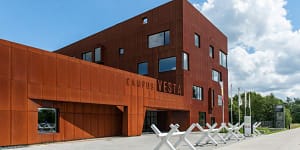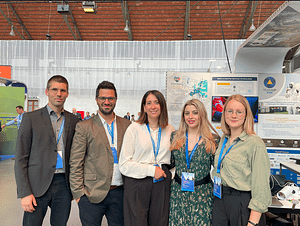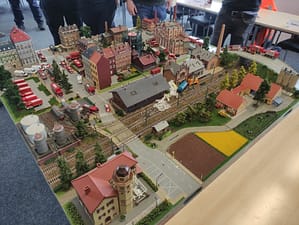
Plenary Meeting in Ranst, Belgium
The TeamUP consortium came together for the second guided Table Top Exercise, the second guided Small Scale Exercise, the Co-Creation Workshop and meeting.
CBRN-E incidents and resulting casualties are a permanent threat across the continent. In past incidents, First Responders were often required to provide help without having conducted sufficient training on how to operate in CBRN-E incidents. Moreover, First Responders are seldom aware of the risks that CBBN-E material poses to their health. The management of a CBRN-E scene including the recovery of persons concerned requires standard operating procedures, advanced skills and suitable equipment. A step-by-step approach needs to include (1) detection of the CBRN-E threat, (2) triage of casualties and (3) on-site decontamination before the provision of medical aid.
To address this challenge, the TeamUP project brings together 23 partners from the European Union aiming to establish a unified framework for evaluating capabilities, procedures and co-developed solutions to be used in CBRN-E preparedness and response.

The TeamUP consortium came together for the second guided Table Top Exercise, the second guided Small Scale Exercise, the Co-Creation Workshop and meeting.

From 4th to 5th June, TeamUP was represented at the eight edition of the European Civil Protection Forum in Brussels.

In March, the TeamUP consortium had the privilege of participating in two significant training exercises organized by the FDDO, in Dortmund, Germany.

From 24th to 26th January 2024, the consortium of the TeamUP project held its Kick-off Meeting in Athens, Greece. Led by the Greek Institute of Communication
Be informed about the latest news, upcoming events or scientific and technological background information on the research and innovation Project TeamUP. Receive updates about the exercises, Small Scale and Full-Scale Trials, workshops and final conference to meet other end users, stakeholders and scientists as well as technological partners dedicated to enhancing the capacities of first responders and advancing rescue operations in the case of a CBRN-E event.
The TeamUP project brings together 23 partners, including Universities, Research Centres, NGOs, Emergency Responders, Agencies, and Companies from the European Union aiming to establish a unified framework for evaluating capabilities, procedures and co-developed solutions to be used in CBRN-E preparedness and response. Moreover, TeamUP will integrate tools for triage and decontamination along with modules for collaborative and digitized Planning, Response and Training. The Consortium includes eight CBRN-E experts and first responder organisations and thirteen technology partners.
The Advisory Board serves as a critical body of the project to advise the consortium on organisational, operational and policy levels as well as on technology developments and standardisation-related activities throughout the project. The Board impact the project’s outcomes by identifying gaps and needs during the use case definition, participating in workshops for the co-creation process and definition of requirements of the technology evaluation framework, participating in exercises, and validating and disseminating project results.